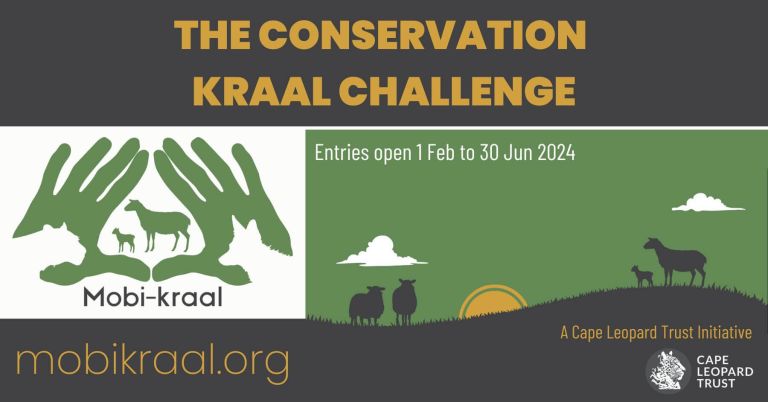Wherever humans overlap predator ranges, there is inevitably potential for direct or indirect harm to wildlife and human livelihoods. Coexistence between predators and humans on shared landscapes is possible, but requires close scrutiny of mitigation methods – an aspect that have received surprisingly little attention in terms of sound scientific testing.
The Predator Ecology and Coexistence Experiment (PEACE) is a collaborative project that involves partnership with the Cape Leopard Trust, Conservation South Africa, South African National Parks as well as national and international academic institutions. Wildlife biologists Dr Bogdan Cristescu and Kristine Teichman led the research on this sensitive issue in the Northern Cape. The study area encompassed central-eastern Namaqua National Park and neighbouring farmlands where leopard, caracal and jackal have been known to take livestock, particularly sheep and goats. The CLT has been active in this area before, when a study led by Ben-John Dreyer in 2008-2009 provided the first scientific evidence of resident leopards in this region since 1922.
The PEACE project’s primary project aim was to test methods of farm management that are both ecologically and economically supportive – in other words, to facilitate coexistence between farmers and predators by providing an ecological evidence-base for various human-predator conflict mitigation methods. To achieve this, a rigorous study design that included treatments, replication and control, was employed. In addition to testing the effectiveness of methods to limit livestock losses and conserve biological diversity, the Bogdan & Kristine also explored spatial and temporal predator movement patterns in response to the treatments, tested predator recognition theory by livestock in response to predation risk, and aimed to determine whether human-induced trophic cascades were occurring on farmlands.
Additionally, Corlé Jansen also conducted a focused short-term MSc study (University of Stellenbosch) assessing the diet of these predators and how their respective food habits vary between farmlands and protected areas, using scat and GPS cluster analysis.
The fieldwork and data collection phase of the PEACE project has been completed, and the entire study is now being analysed and written up. With wildlife-human conflict being prevalent worldwide in situations where wildlife intersects the interests of humans, this project has broad relevance from an ecological, socio-economical and animal welfare perspective. The implementation of specific mitigation measures will of course depend upon evidence of their effectiveness, willingness of stakeholders to implement them and appropriate licensing and legislation. Solutions will only arise by working together towards a common goal of reducing livestock depredation and at the same time enabling biodiversity conservation.

















